- The Terry Petunia: A Classic Choice for Every Garden
- Key Features of the Terry Petunia:
- Care Tips for the Terry Petunia:
- Cascade Petunias: Add Drama to Your Landscape
- What are Cascade Petunias?
- Why Choose Cascade Petunias?
- How to Care for Cascade Petunias
- Ampel Surfinias: Perfect for Hanging Baskets
- Choosing the Right Petunia Variety for Your Climate
- 1. Cold Climate
- 2. Warm Climate
- 3. Humid Climate
- 4. Coastal Climate
- 5. Rainy Climate
- Terry Petunias vs Cascade Petunias: Which is Better?
- Terry Petunias
- Cascade Petunias
- Which is Better?
- Creating Stunning Combinations with Terry Petunias
- Introduction
- Choosing Terry Petunias
- Complementing with Foliage
- Creating Hanging Baskets
- Planting in Containers
- Maintaining Your Combinations
- Enhance Your Garden with Ampel Surfinias
- Caring for Your Petunias and Surfinias: Tips and Tricks
- 1. Proper Watering
- 2. Sunlight Requirements
- 3. Fertilization
- 4. Deadheading
- 5. Pest and Disease Control
- Questions and Answers:
- What are some popular varieties of petunia and surfinia?
- Are petunias and surfinias easy to take care of?
- What are the characteristics of Terry petunias?
- Can I grow petunias and surfinias in hanging baskets?
- How long do petunias and surfinias bloom?
- Videos: How to Prune Petunias
Petunias and Surfinias are popular choices for gardeners looking to add vibrant color and beauty to their outdoor spaces. These flowering plants are known for their stunning blooms and easy care requirements. With a wide variety of colors and patterns to choose from, petunias and surfinias offer endless possibilities for creating spectacular displays in gardens, hanging baskets, and containers.
One of the best varieties of petunia is Terry. This type of petunia features large, ruffled blooms that come in a range of colors, including pink, purple, and white. Its unique fringed petals make it a standout choice for adding texture to flower beds or borders. Terry petunias are also excellent for attracting pollinators, such as butterflies and hummingbirds, to the garden.
Cascade is another top variety of petunia that is highly popular among gardeners. As its name suggests, Cascade petunias have a trailing habit, making them perfect for hanging baskets, window boxes, or cascading over walls and fences. Their profuse blooms create a waterfall effect, adding a touch of elegance to any outdoor space. Cascade petunias are available in a wide range of colors, from bold reds and oranges to soft pinks and blues, offering countless options for creating stunning displays.
Ampel petunias, also known as Surfinias, are the go-to choice for those seeking show-stopping hanging baskets or cascades of color. With their vigorous growth habit and long trailing stems, Ampel petunias can quickly fill up empty spaces and create breathtaking displays. These plants produce an abundance of large flowers in vibrant shades of pink, purple, and red. Ampel petunias are also drought-tolerant, making them perfect for hanging baskets that require less frequent watering.
Whether you choose Terry, Cascade, or Ampel, petunias and surfinias are sure to add a pop of color and beauty to any garden or outdoor space. With their stunning blooms, easy care requirements, and a wide variety of colors to choose from, these varieties are among the best options for creating spectacular displays. So go ahead and unleash your creativity with these beautiful and versatile flowering plants!
The Terry Petunia: A Classic Choice for Every Garden
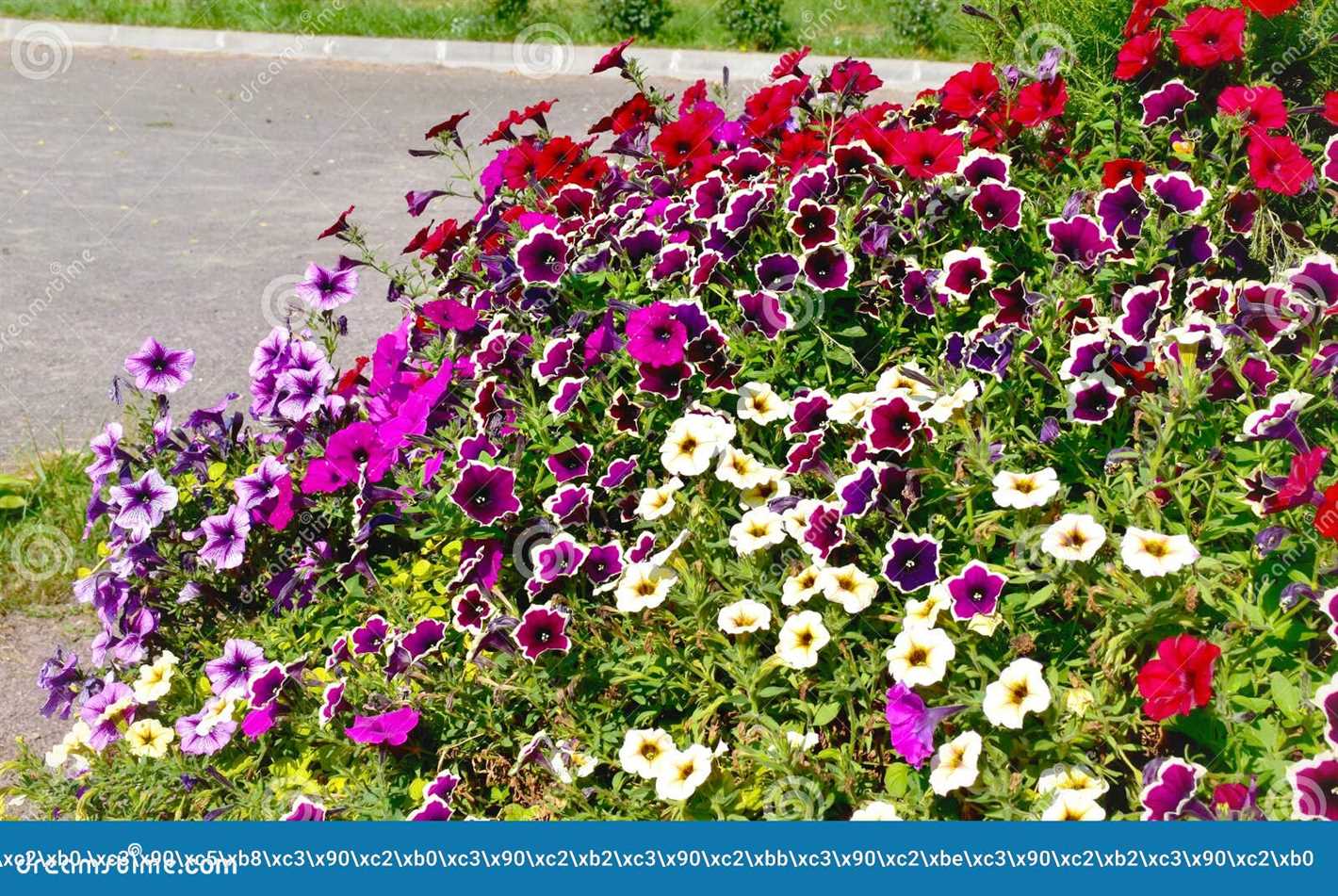
The Terry Petunia is a classic and popular choice for gardeners of all levels of experience. With its vibrant colors, delicate blossoms, and impressive growth habit, the Terry Petunia is sure to add beauty to any garden.
This variety of petunia is named after a renowned horticulturist, Terry, who specialized in breeding petunias. Terry Petunias are known for their large, ruffled flowers that come in a variety of stunning colors, including shades of pink, purple, white, and red.
Key Features of the Terry Petunia:
- Large, ruffled flowers
- Wide range of vibrant colors
- Resilient and easy to grow
- Long blooming period
The Terry Petunia is a versatile plant that can be grown in various settings, including hanging baskets, containers, and flower beds. Its cascading growth habit makes it ideal for adding vertical interest to any garden design.
One of the main advantages of the Terry Petunia is its hardiness. It can tolerate a wide range of soil conditions and is resistant to common pests and diseases, making it a low-maintenance option for gardeners.
Care Tips for the Terry Petunia:
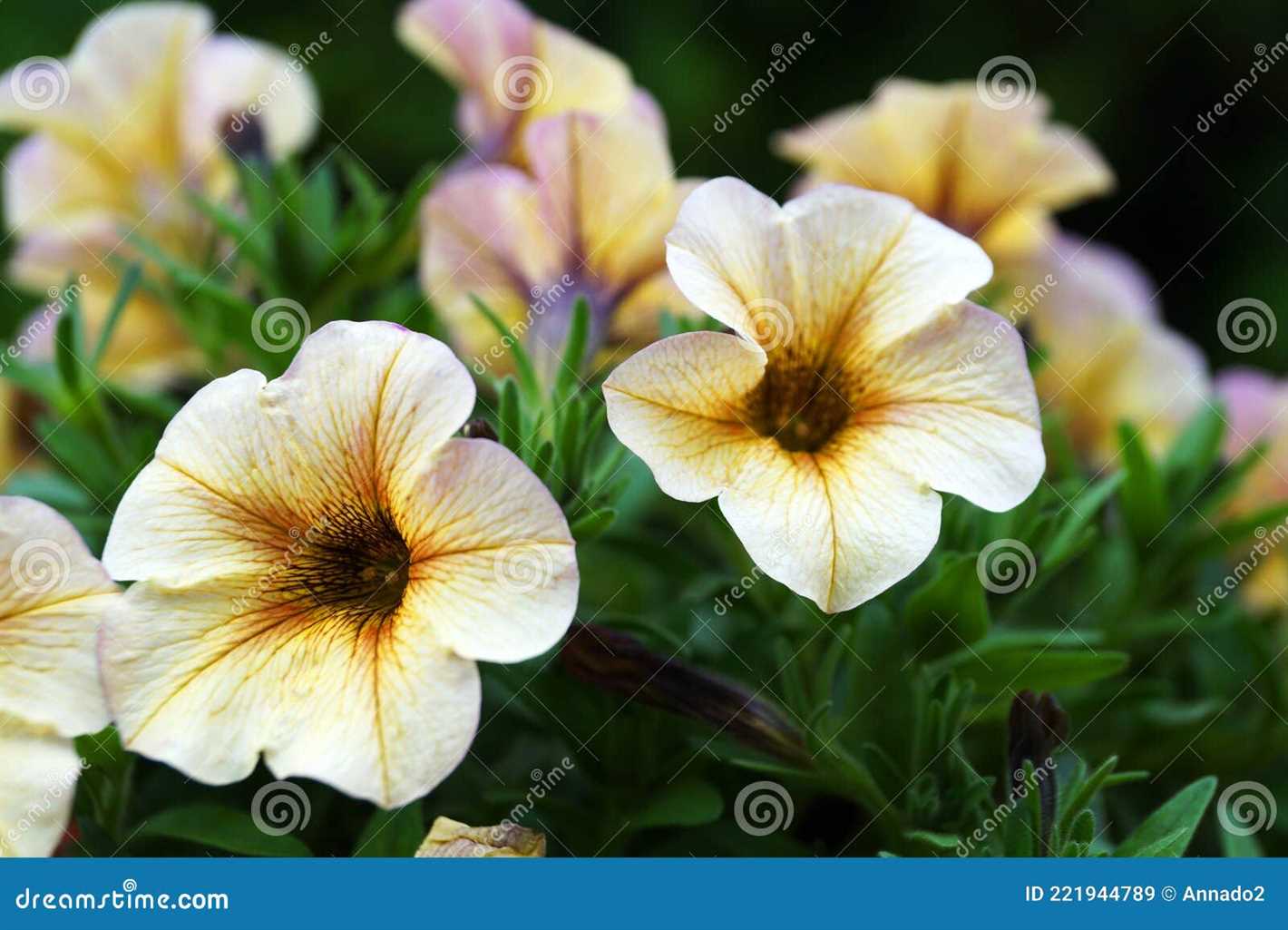
- Plant in well-draining soil
- Water regularly, avoiding overwatering
- Apply a balanced fertilizer every two weeks
- Deadhead faded flowers to promote continuous blooming
- Protect from frost in colder climates
The Terry Petunia is a classic choice that never goes out of style. Its vibrant colors, unique ruffled flowers, and easy care requirements make it a favorite among gardeners worldwide. Whether planted in containers or beds, the Terry Petunia is sure to be a showstopper in any garden.
Cascade Petunias: Add Drama to Your Landscape
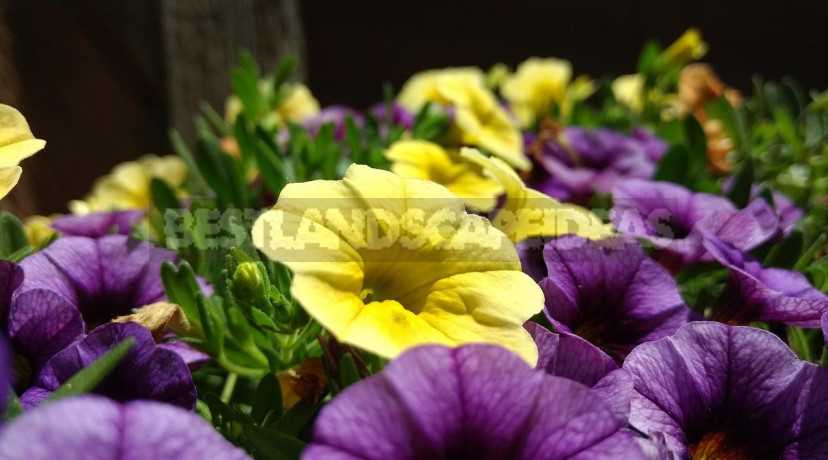
Cascade petunias are a popular choice for adding drama and beauty to landscapes. With their trailing habit and vibrant colors, these petunias make a statement wherever they are planted.
What are Cascade Petunias?
Cascade petunias, also known as trailing petunias, are a type of petunia that has a cascading growth habit. This means that the stems and flowers of the plant will grow downward, creating a stunning cascade effect. They are often used in hanging baskets, containers, and window boxes to create a dramatic display.
Why Choose Cascade Petunias?
There are several reasons why cascade petunias are a great choice for your landscape:
- Trailing habit: The trailing habit of cascade petunias makes them perfect for hanging baskets and containers. They can also be used to create a cascading effect along walls or slopes.
- Easy to grow: Cascade petunias are relatively easy to grow, making them a favorite among both beginner and experienced gardeners.
- Wide color range: Cascade petunias come in a wide range of colors, from bold and vibrant hues to soft pastels. This allows you to choose the perfect color scheme for your landscape.
- Long blooming period: Cascade petunias have a long blooming period, providing color and beauty throughout the summer months.
How to Care for Cascade Petunias
Cascade petunias are relatively low-maintenance, but there are a few care tips that can help keep them looking their best:
- Sun exposure: Cascade petunias thrive in full sun, so make sure to plant them in a location that receives at least six hours of direct sunlight per day.
- Watering: Cascade petunias prefer moist soil, so make sure to water them regularly. Avoid overwatering, as this can lead to root rot.
- Fertilizing: Apply a balanced fertilizer every two to three weeks to promote healthy growth and abundant blooms.
- Deadheading: Remove faded flowers to encourage continuous blooming.
With their cascading growth habit and vibrant colors, cascade petunias are sure to add drama and beauty to your landscape. Whether planted in hanging baskets, containers, or along walls, these petunias are a stunning choice for any garden.
| Cascade Petunias | Care |
|---|---|
| Trailing habit | Sun exposure |
| Easy to grow | Watering |
| Wide color range | Fertilizing |
| Long blooming period | Deadheading |
Ampel Surfinias: Perfect for Hanging Baskets
Ampel Surfinias are a popular variety of petunia that are perfect for hanging baskets. With their trailing growth habit and vibrant blooms, they add a burst of color and life to any outdoor space.
Here are some reasons why Ampel Surfinias are the perfect choice for hanging baskets:
- Trailing Growth: Ampel Surfinias have long, cascading stems that can reach up to 4 feet in length. This trailing growth habit makes them ideal for hanging baskets, as they will drape beautifully over the sides.
- Abundant Blooms: These petunias produce an abundant amount of blooms throughout the growing season. The flowers come in a wide range of colors, including shades of pink, purple, red, and white, allowing you to create a stunning display in your hanging baskets.
- Tolerant of Heat and Drought: Ampel Surfinias are known for their ability to tolerate hot and dry conditions. This makes them a great choice for hanging baskets that are exposed to direct sunlight and may require less frequent watering.
- Low Maintenance: These petunias are relatively low maintenance and require minimal pruning or deadheading. This makes them a hassle-free option for hanging baskets, as they will continue to bloom and thrive with minimal effort from you.
When planting Ampel Surfinias in hanging baskets, it’s important to choose a high-quality potting mix that is well-draining. This will help prevent waterlogged roots and keep your plants healthy.
Overall, Ampel Surfinias are the perfect choice for anyone looking to add vibrant, trailing petunias to their hanging baskets. With their beautiful blooms, heat tolerance, and minimal maintenance requirements, they are sure to be a show-stopper in your garden or outdoor space.
Choosing the Right Petunia Variety for Your Climate
When it comes to choosing the right petunia variety for your garden, it is important to consider the climate in which you live. Different petunia varieties have different preferences when it comes to temperature and sunlight, so selecting the right one for your region can make a big difference in the success of your garden.
1. Cold Climate
If you live in a cold climate where temperatures drop below freezing, it is best to choose petunia varieties that are cold-hardy. Some popular cold-tolerant petunia varieties include Terry, Cascade, and Ampel. These varieties can withstand colder temperatures and are more likely to survive frost and chilly nights.
2. Warm Climate
For those living in warm climates with hot summers and mild winters, petunia varieties like Surfinia are a great choice. These varieties are heat-tolerant and can handle full sun exposure without getting damaged. They thrive in warm temperatures and provide a profusion of blooms all season long.
3. Humid Climate
If you live in a humid climate where moisture levels are high, it is important to choose petunia varieties that can handle the excess moisture. Surfinia and Ampel petunias are known for their resistance to diseases that thrive in humid conditions, such as powdery mildew and gray mold. These varieties are an excellent choice for gardens in humid climates.
4. Coastal Climate
If you live in a coastal area with salty air and sandy soil, look for petunia varieties that are salt-tolerant. Terry and Cascade petunias are known for their ability to withstand the harsh conditions of coastal gardens. They can tolerate the salt spray and sandy soil, making them a perfect choice for coastal gardening.
5. Rainy Climate
For gardens in regions with a lot of rainfall, it is important to choose petunia varieties that can handle the excess moisture. Ampel petunias, with their trailing habit, are a good choice as they allow water to drain more easily. Additionally, selecting petunias with disease resistance, such as Terry, can help prevent issues like fungal diseases that thrive in wet conditions.
| Climate | Recommended Petunia Varieties |
|---|---|
| Cold Climate | Terry, Cascade, Ampel |
| Warm Climate | Surfinia |
| Humid Climate | Surfinia, Ampel |
| Coastal Climate | Terry, Cascade |
| Rainy Climate | Terry, Ampel |
By considering the climate in which you live and selecting the right petunia variety accordingly, you can ensure that your garden thrives and produces beautiful blooms all season long. Whether you are dealing with cold temperatures, hot summers, or excess moisture, there is a petunia variety out there that is perfect for your garden.
Terry Petunias vs Cascade Petunias: Which is Better?
When it comes to petunias, two popular varieties that gardeners often consider are Terry petunias and Cascade petunias. Both varieties have their own unique qualities and advantages. In this article, we will compare Terry petunias and Cascade petunias to help you decide which is better for your garden.
Terry Petunias
- Terry petunias are known for their large, ruffled flowers that resemble carnations. These vibrant and showy flowers can add a touch of elegance to any garden.
- They come in a wide range of colors, including shades of pink, purple, red, and white.
- Terry petunias have a compact growth habit, making them ideal for containers, hanging baskets, and borders.
- They are relatively easy to grow and maintain, requiring regular watering and fertilization.
- Terry petunias are often used as a focal point in garden designs due to their striking flowers.
Cascade Petunias
- Cascade petunias are characterized by their trailing, cascading growth habit. These varieties are perfect for hanging baskets or spilling over the edges of containers and walls.
- They have smaller flowers compared to Terry petunias, but they make up for it with their abundant blooms.
- Cascade petunias are available in a wide array of colors, including shades of pink, purple, blue, and white.
- They are low-maintenance and tolerant of heat and drought conditions, making them suitable for beginners or busy gardeners.
- Cascade petunias create a stunning visual effect when planted in mass or combined with other trailing plants.
Which is Better?
Choosing between Terry petunias and Cascade petunias ultimately depends on your personal preference and garden needs. If you prefer larger and more vibrant flowers with a compact growth habit, Terry petunias might be the better choice for you. On the other hand, if you are looking for a trailing variety that can add a cascading effect to your garden, Cascade petunias would be a perfect fit.
Consider the space available in your garden, the desired visual effect, and the maintenance requirements before making a decision. Ultimately, both Terry petunias and Cascade petunias are beautiful and versatile plants that can enhance the beauty of any garden.
Creating Stunning Combinations with Terry Petunias
Introduction
Terry petunias are a beautiful and popular variety of petunia that can add a stunning touch to any garden or landscape. With their vibrant colors and cascading growth habit, they are perfect for creating stunning combinations and eye-catching displays.
Choosing Terry Petunias
When selecting Terry petunias for your combination, look for varieties that complement each other in terms of color and growth habit. Terry petunias come in a wide range of colors, including shades of pink, purple, red, and white. Consider choosing a mix of colors to add variety and visual interest to your combinations.
Complementing with Foliage
To create truly stunning combinations, consider complementing your Terry petunias with plants that have contrasting foliage. For example, pairing them with plants that have dark green or burgundy leaves can make the vibrant colors of the petunias stand out even more. Additionally, plants with trailing or cascading growth habits can create a beautiful contrast with the upright growth habit of the Terry petunias.
Creating Hanging Baskets
Terry petunias are particularly well-suited for creating stunning hanging baskets. Their cascading growth habit allows them to spill over the sides of the basket, creating an impressive display of color. When creating a hanging basket with Terry petunias, consider using a variety of petunia colors and complementing them with trailing plants or foliage plants that add texture and interest.
Planting in Containers
Another way to create stunning combinations with Terry petunias is by planting them in containers. The vibrant colors of the petunias can add a pop of color to any patio or balcony. Choose containers with varied heights and sizes to create visual interest, and consider adding other flowering plants or foliage plants to create a full and lush look.
Maintaining Your Combinations
To keep your combinations looking stunning, it is important to provide proper care and maintenance. Make sure to water your Terry petunias regularly, especially during dry periods. Deadheading spent flowers can help promote continuous blooming. Additionally, fertilizing your plants with a balanced fertilizer can help keep them healthy and vibrant.
Overall, Terry petunias are a versatile and beautiful choice for creating stunning combinations in your garden or landscape. By selecting complementary plants and providing proper care, you can create eye-catching displays that will impress anyone who sees them.
Enhance Your Garden with Ampel Surfinias
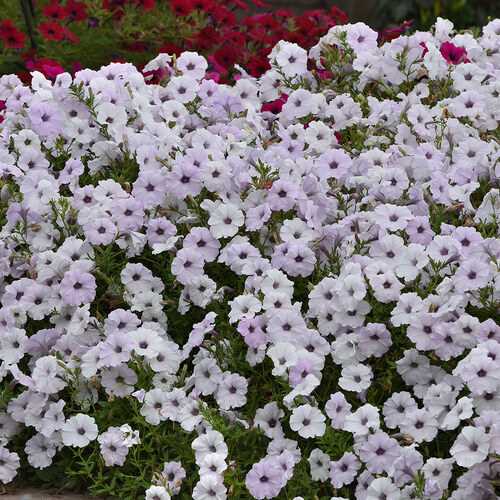
Ampel Surfinias are a beautiful and versatile plant that can enhance any garden. With their cascading blooms and vibrant colors, these flowers are sure to catch the eye of any passerby. Whether you have a small balcony or a sprawling backyard, Ampel Surfinias can be the perfect addition to your landscape.
One of the main advantages of Ampel Surfinias is their ability to trail and hang down, making them ideal for hanging baskets or pots. They can create a stunning visual effect when planted in a row along a fence or balcony railing. The cascading effect of the flowers adds a sense of movement and elegance to your garden.
Ampel Surfinias are also known for their long-lasting blooms, which can last from early summer until the first frost. This means that you can enjoy their vibrant colors and delicate fragrance for several months. They are also heat-tolerant and can withstand high temperatures, making them a great choice for hot climates.
When it comes to care, Ampel Surfinias are fairly low-maintenance. They require regular watering to keep the soil moist but not waterlogged. Deadheading the spent flowers will encourage new blooms to form, ensuring a continuous display of color throughout the season.
If you’re looking to enhance your garden with Ampel Surfinias, there are several varieties to choose from. Some popular options include Surfinia Petunia ‘Blue Vein’, Surfinia Petunia ‘Orange’, and Surfinia Petunia ‘Hot Pink’. Each variety offers its own unique color and characteristics, allowing you to create a customized display in your garden.
In conclusion, Ampel Surfinias are a versatile and beautiful plant that can enhance any garden. Their cascading blooms, long-lasting flowers, and low-maintenance nature make them an excellent choice for both beginner and experienced gardeners. Consider adding Ampel Surfinias to your garden to create a stunning and eye-catching display.
Caring for Your Petunias and Surfinias: Tips and Tricks
1. Proper Watering
Watering is a crucial part of caring for your petunias and surfinias. It’s important to water them regularly, especially during hot and dry periods. Here are some tips:
- Water the plants at the base, aiming for the soil rather than the leaves.
- Make sure to water deeply, allowing the water to penetrate the soil.
- Avoid overwatering, as it can lead to root rot. Only water when the top inch of the soil feels dry.
- Consider using a drip irrigation system or a soaker hose to ensure even moisture distribution.
2. Sunlight Requirements
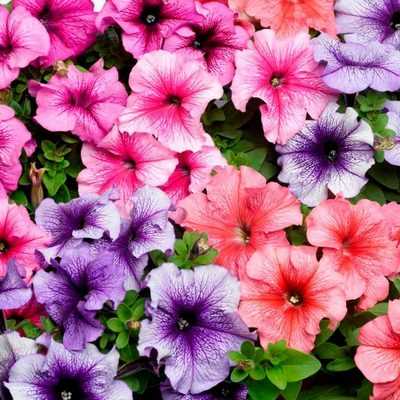
Petunias and surfinias thrive in full sunlight. Here’s what you need to know:
- Choose a location for your plants that receives at least 6 hours of direct sunlight each day.
- Avoid planting them in areas with excessive shade, as it can hinder their growth and flower production.
- However, in extremely hot climates, providing some afternoon shade can help protect the plants from wilting.
3. Fertilization
Proper fertilization can help your petunias and surfinias grow and bloom to their full potential. Follow these guidelines:
- Use a balanced, water-soluble fertilizer or a slow-release granular fertilizer specifically formulated for flowering plants.
- Apply the fertilizer according to the instructions on the package, usually every 2-4 weeks.
- Avoid overfertilization, as it can lead to excessive foliage growth with fewer blooms.
4. Deadheading
Regular deadheading is essential to keep your petunias and surfinias looking their best and encourage continuous blooming. Here’s what you should do:
- Remove faded flowers by pinching or cutting them off at the base of the stem.
- Deadhead your plants at least once a week to eliminate spent blooms and promote new growth.
- Deadheading also helps prevent seed production, redirecting the plant’s energy towards producing more flowers.
5. Pest and Disease Control
Although petunias and surfinias are generally resistant to pests and diseases, they may occasionally encounter some issues. Here are a few tips to keep them healthy:
- Monitor your plants regularly for signs of pests, such as aphids or whiteflies. If detected, treat them with insecticidal soap or neem oil.
- Keep the plant’s foliage dry to prevent fungal diseases, such as powdery mildew or botrytis. Watering in the morning and providing adequate air circulation can help reduce the risk.
- If you notice any signs of disease, promptly remove affected plant parts to prevent the spread.
By following these tips and tricks, you can ensure the proper care and maintenance of your petunias and surfinias, leading to beautiful and thriving plants throughout the growing season.
Questions and Answers:
What are some popular varieties of petunia and surfinia?
Some popular varieties of petunia and surfinia include Terry, Cascade, and Ampel.
Are petunias and surfinias easy to take care of?
Yes, petunias and surfinias are relatively easy to take care of. They require regular watering, full sun or partial shade, and well-drained soil.
What are the characteristics of Terry petunias?
Terry petunias are known for their large, ruffled flowers. They come in a variety of colors, including pink, purple, and white.
Can I grow petunias and surfinias in hanging baskets?
Yes, petunias and surfinias are great for hanging baskets as they have a trailing habit. They will create a beautiful cascade of flowers.
How long do petunias and surfinias bloom?
Petunias and surfinias have a long blooming season, typically from spring to fall. With proper care, they can provide continuous blooms throughout the entire season.







